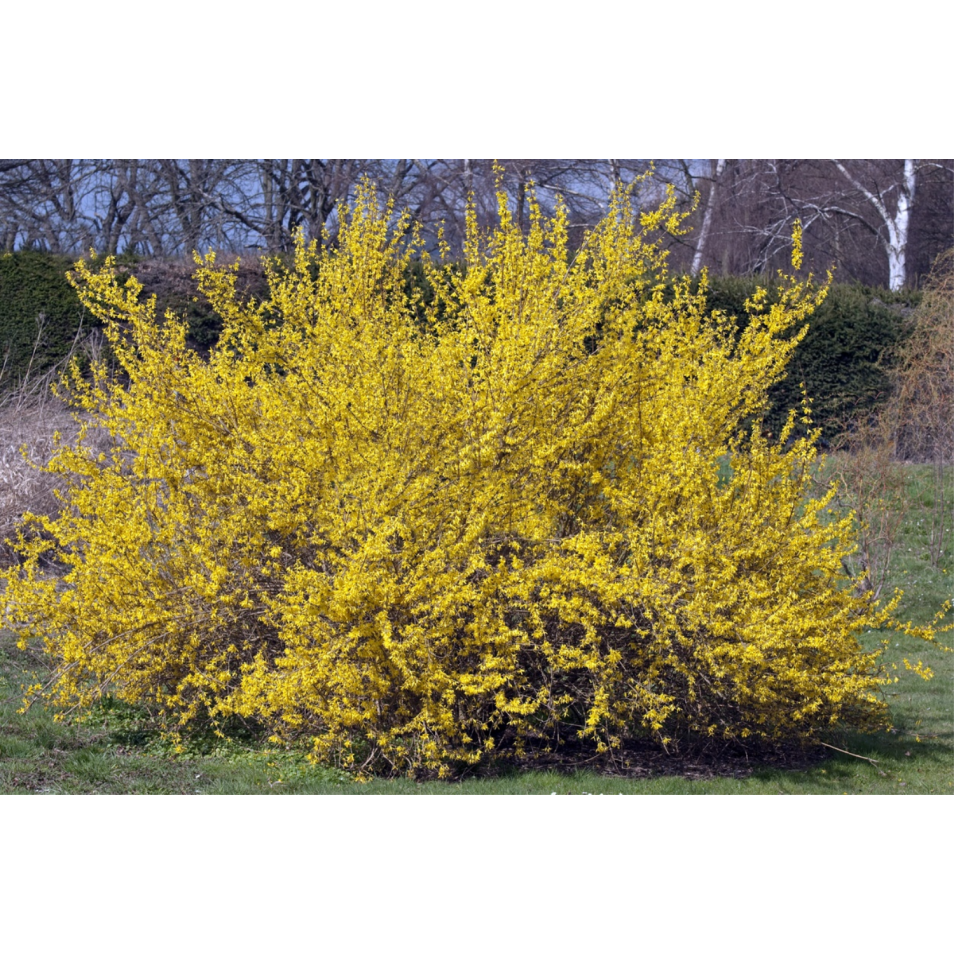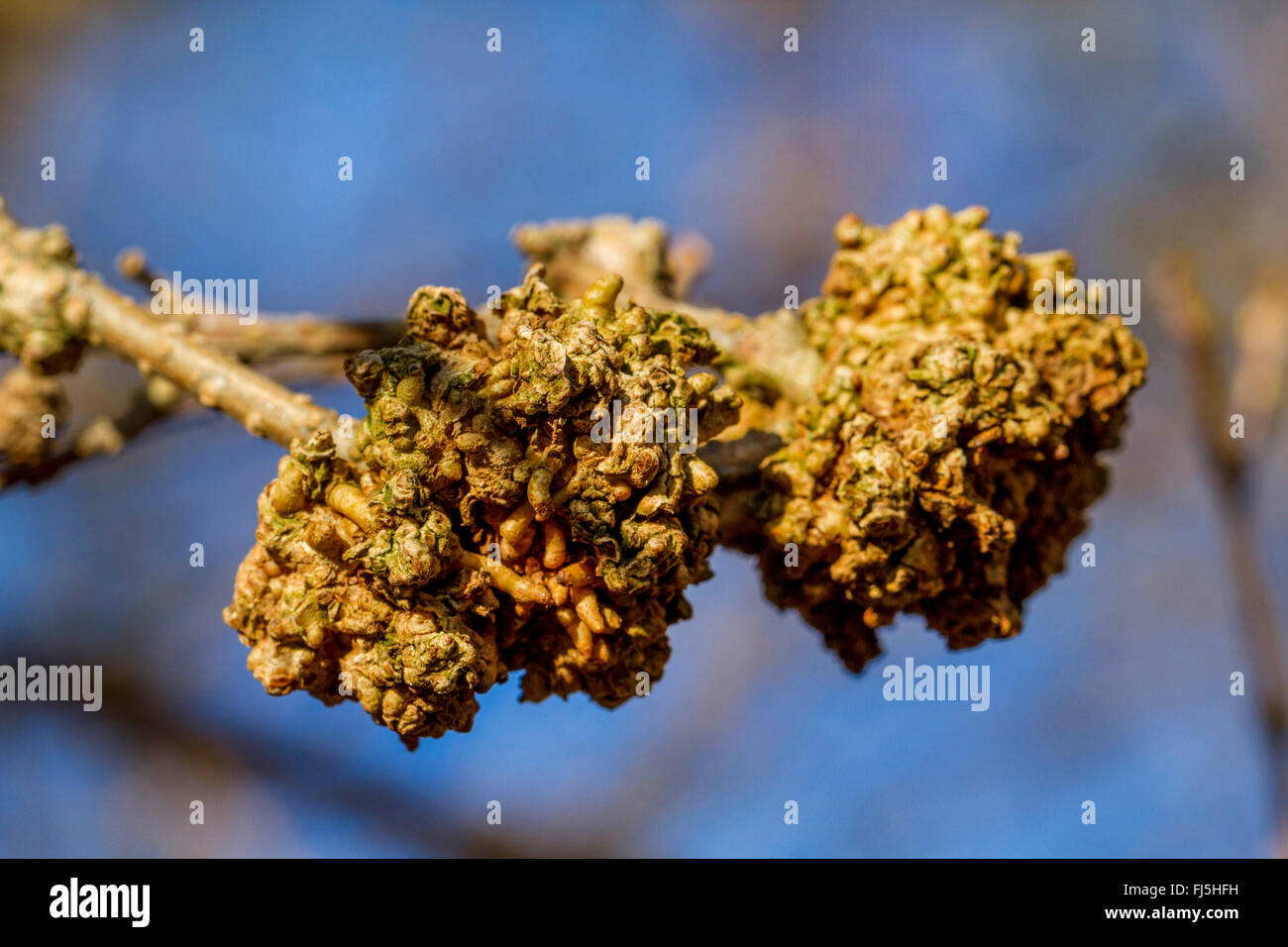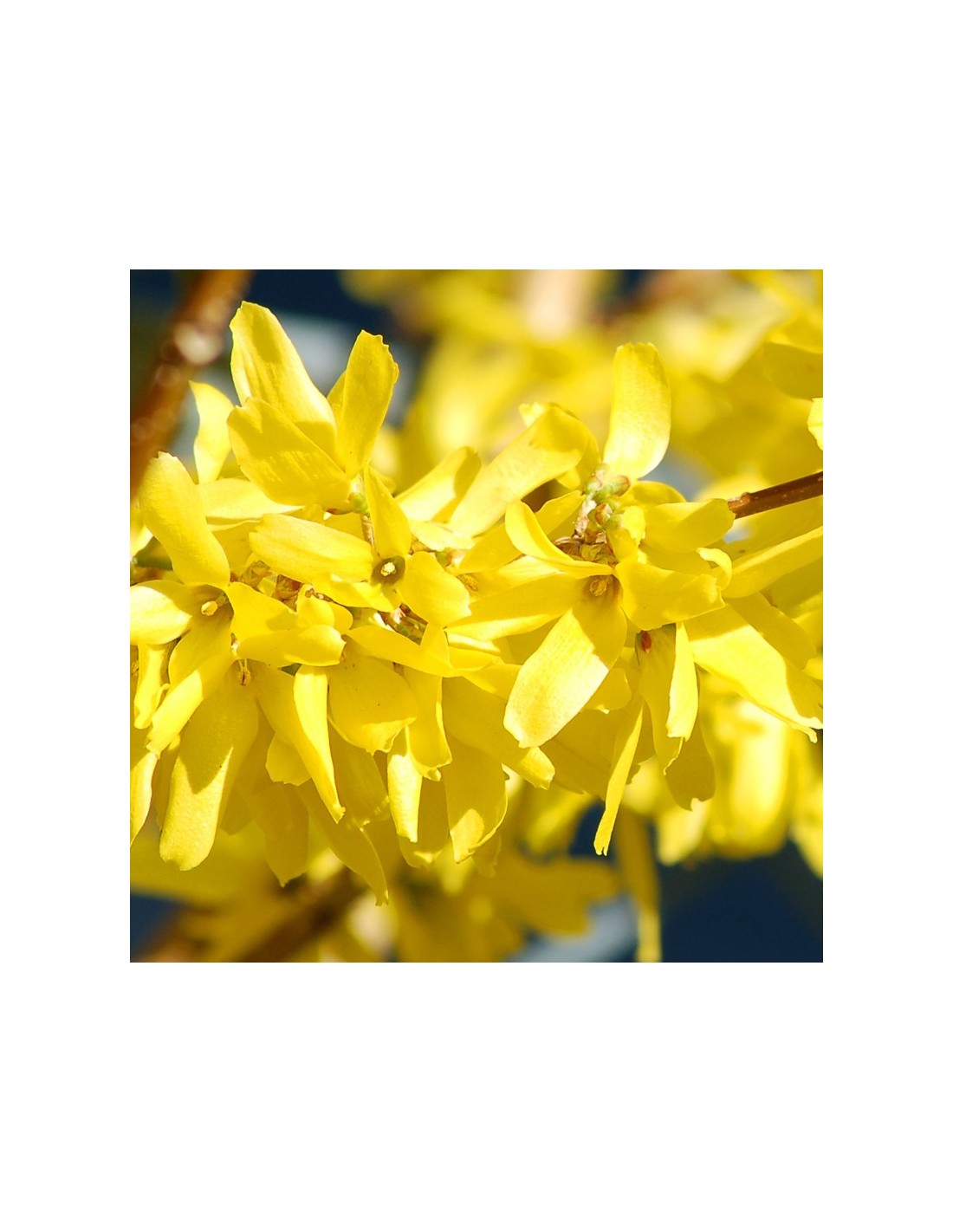
forsythia, Forsythia spp. (Scrophulariales Oleaceae) 5146040
Forsythia is high in oleanolic acid and is believed to be able to help maintain the heart muscle as well as the ability to help maintain healthy blood pressure. Additionally, traditional Chinese medicine shows forsythia to have both broad-spectrum antimicrobial and antiinflammatory properties.

FORSYTHIA Le forsythia est un des tous premiers arbustes à… Flickr
Forsythia branches can be cut and brought indoors, even in the bud stage. Here's how to get the most out of your late winter bouquet. Choose branches with plump buds 2 to 4 weeks before normal bloom time. Cut branches at least 12 to 18 inches long at a 45-degree angle to help stems absorb water.

Forsythia X intermedia 100/+ cm
Elle est utilisée dans le traitement des rhumes, des angines, des oreillons, de la grippe, des troubles digestifs et urinaires. Elle soigne les affections de la peau, les abcès et les furoncles..

Common forsythia (Forsythia x intermedia, Forsythia intermedia), with gall of bacteria
Forsythia is a shrub used in Traditional Chinese Medicine to treat symptoms like nausea and fever. Though there is minimal research, some evidence shows that forsythia may have antibacterial, antiviral, and anti-inflammatory properties that could provide relief for minor medical ailments.

showy forsythia, Forsythia x intermedia (Scrophulariales Oleaceae) 1604605
Updated on March 6, 2023 In This Article View All Where to Plant Planting Tips Care Pests and Problems Propagation Often called a harbinger of spring, forsythia bursts into a vibrant display of bright yellow blooms before any of its foliage emerges.

showy forsythia (Forsythia x intermedia)
Overwintering Common Diseases Bloom FAQ Forsythias are a genus of deciduous flowering shrubs that belong to the olive family. These low-maintenance, fast-growing shrubs feature an upright, arching form and are known for their long branches that fill with brilliant yellow blooms early in the spring.

forsythia (Genus Forsythia)
Le forsythia est un arbuste appartenant à la famille des Oleaceae. C'est l'un des premiers à parer nos jardins de jolies petites fleurs jaune d'or à la sortie de l'hiver. Voici ses caractéristiques et quelques conseils pour le cultiver. Forsythia Fiche de culture du Forsythia Nom latin Forsythia sp. Autre dénomination Mimosa de Paris ; Exposition

Common forsythia (Forsythia x intermedia, Forsythia intermedia), with gall of bacteria
Overview Forsythia is a shrub. The dried fruit is used for medicine. Forsythia is used for airway illnesses, swelling, fever, and other conditions. But there is no good scientific research to.

Pretty Medicine Forsythia
History. Forsythia fruits are widely used in Chinese traditional medicine for antipyretic and anti-inflammatory activity in the treatment of bacterial infections and upper respiratory ailments. They are commonly combined with honeysuckle flower (Lonicera) and other ingredients.

showy forsythia (Forsythia x intermedia)
Huile essentielle de forsythia Forme : Liquide incolore à jaune clair Contenu : Forsythine 26% Certifications : ISO, KOSHER, HACCP, HALAL, Biologique Densité relative : 0.8596-0.8703 Indice de réfraction : 1.4670-1.4750 Emballage : 1kg, 5kg, 10kg, 25kg, 50kg Fonction : Antibactérien, antioxydant Discuter maintenant Envoyez demande Description

forsythia (Genus Forsythia)
Post-Planting Care: Water your newly planted Forsythia deeply to ensure the roots are well-hydrated. Apply a 2-3 inch layer of organic mulch around the base of the plant to help retain moisture, suppress weeds, and regulate soil temperature. Keep the mulch a few inches away from the stem to prevent rot.

early forsythia (Forsythia ovata)
Forsythia, often one of the earliest signs of spring, is a deciduous shrub cherished for its vibrant display of bright yellow flowers. Before most other plants have shaken off winter's slumber, forsythia bursts into a golden spectacle, covering its branches in a dense cloak of blooms.

showy forsythia, Forsythia x intermedia (Scrophulariales Oleaceae) 5146046
Il est particulièrement utilisé pour raffermir la peau vieillissante. Il est idéal pour les soins des peaux matures, du buste, et décolleté. On peut également l'utiliser pour soutenir la peau du ventre des femmes après l'accouchement pour qu'elles retrouvent tonus et fermeté.

Forsythia intermedia
De la famille des oléacées, le Forsythia est un arbuste à fleurs dont les origines remontent à l'Asie et l'Europe du Sud-est. Plante vivace à feuillage caduc encore appelé « mimosa de Paris », le Forsythia n'a pas son pareil pour sublimer vos haies fleuries et donner une allure élégante et joyeuse à votre jardin.

showy forsythia (Forsythia x intermedia)
Forsythia / fɔːrˈsɪθiə /, / fɔːrˈsaɪθiə / [2] is a genus of flowering plants in the olive family Oleaceae. There are about 11 species, mostly native to eastern Asia, but one native to southeastern Europe. [1] Forsythia - also one of the plant's common names - is named after William Forsyth. [3] [4] [5] Description

showy forsythia (Forsythia x intermedia)
In the realm of traditional medicine, there are many plant species that have been used to promote health and treat various ailments. One such plant, Forsythia suspensa, often simply referred to as Forsythia, holds an esteemed place particularly in traditional Chinese medicine. This deciduous shrub, native to Asia, is not only admired for its brilliant yellow blooms, but also for its potent.